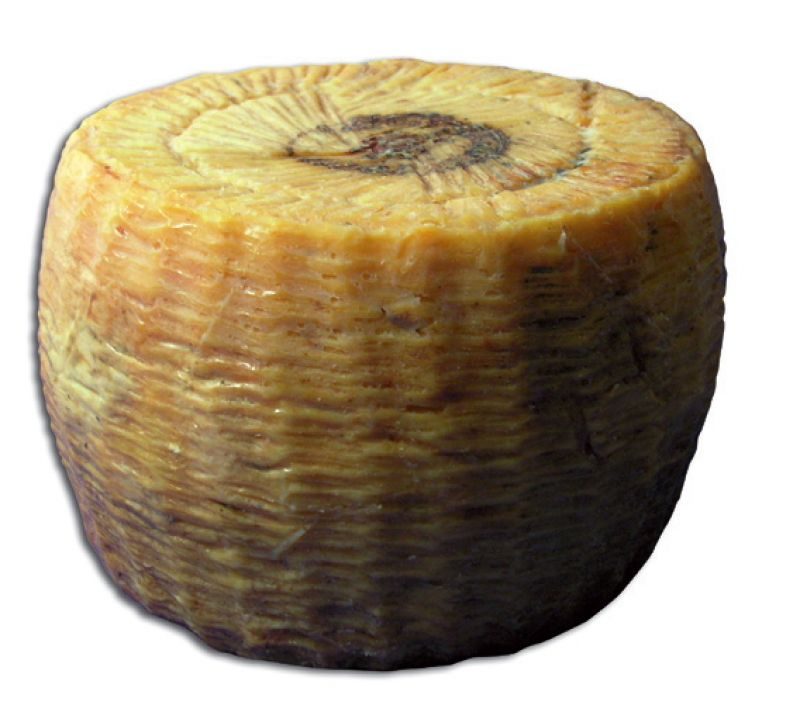Picurinu: tuma, primosale, second salt, seasoned
Product included in the national list of traditional agri-food products (PAT)
PAT type: Cheeses
Production area: Whole Sicilian territory
Technical data sheet of the traditional agri-food product (PAT)
Historical equipment: Wooden vat, wooden patella, wooden cisca, wooden boards, baskets of “fascedde” rush, tinned copper boiler. Direct wood-gas fire.
Maturing rooms: They are cool rooms where the shapes are arranged on the wooden shelves individually or arranged in pairs on top of each other. There are also cellars and caves with geologically natural walls.
Recurring names deriving from different stages of salting / maturing: Fresh tuma without any salting. Primosale indicates a fresh cheese of about 8-10 days that has undergone dry salting or in saturated brine. Secondosale indicates a semi-matured cheese of about 2-4 months that has undergone dry salting or in saturated brine. Aged indicates a cheese, salted in the same way, whose maturation exceeds 4 months.
Brief historical notes: It is perhaps the oldest cheese produced in Sicily, historical references date back to the XNUMXth century. BC, in one of the most famous passages of Homer's Odyssey, when Ulysses meets Polyphemus.
Later Aristotle and Pliny also dwell on the transformation process of this cheese, enhancing its unique taste. In particular Pliny in his work “Naturalis Historia” draws up a cheese list in which those from Agrigento are mentioned among the best pecorino.
Type: Hard, semi-cooked cheese.
Production: The entire Sicilian territory. Historically the "Picurinu Sicano" is renowned.
Main production technology lines:
- species / breed: Sheep;
- raw material: Whole milk, raw;
- microflora: Natural;
- rennet: Lamb pasta, sometimes kid;
Main power system: Natural and cultivated pasture with integration of fodder and concentrates in the stable in variable quantities with respect to the forage season;
processing techniques: Picurinu (Sicilian sheep cheese) is still produced with traditional techniques. The milk coagulates in a wooden vat at about 34-35 ° C with lamb and / or kid rennet paste in about 45 '. The curd is drained by hand after being placed in "fasced" rush baskets that leave a particular modeling on the surface.
When canned, black peppercorns or chilli flakes can be added, it is then blanched for about 4 hours with a hot scald, placed on a wooden board to dry;
salting: The day after production, dry salting is carried out by hand on the entire surface of the wheel or in saturated brine. If the salting is dry, the operation is repeated at least twice at a distance of about 10 days from each other, then washing with brine when drying phenomena are observed and subsequently spreading the liquids expelled from the cheese on the wheel;
Seasoning: The seasoning takes place at a temperature of 12-16 ° C and with 70-80% RH for a period that can even reach 6-8 months and beyond.
Product features: The shape is cylindrical with flat or slightly concave faces; the rind is white-yellowish, with the wrinkled surface left by the basket and is covered with oil; the paste is compact, white or pale yellow with few holes. The flavor is spicy in the seasoned.
It weighs 4-12 Kg. With a side of 10-18 cm.
Historical references:
Pliny the Elder: "Naturalis Historia ”(11th book).
Pietro de Crescenzi: "Liber ruralium commodorum", 1294.
Homer: "Odyssey" (9th book), 1950th-XNUMXth century. BC, Onorato Castellino – Vincenzo Peloso, Graphic Workshops XNUMX.
Virgil: "Bucolics and Georgics" (Eclogue V and book 3), 37-30 BC / 42-39 BC, Lorenzo Giudice, 1954.
Campisi Carmelo "Sheep and pecorino of Sicily", Francesco Battiato publisher, Catania, 1933.
Regional Association of Breeders "Typical cheeses of Sicily" Palermo, 1986.
Vizzardi-Maffeis "Italian Cheeses", Agricultural Editions, 1990.
National Institute of Rural Sociology: "Atlas of typical products: cheeses", Franco Angeli, Milan, 1990.
Ministry of Agriculture and Forestry: “The Italian DOC cheeses” published by UNALAT in collaboration with INSOR, Franco Angeli, Milan 1992.
CNR: "The dairy products of the South", 1992.
Source Pat Cards: Sicily Region
Card insertion: Ignazio Caloggero
Information contributions: Web, Region of Sicily
Note: The population of the cards of the Heritage database proceeds in incremental phases: cataloging, georeferencing, insertion of information and images. The cultural property in question has been cataloged, and the first information has been entered. In order to enrich the information content, further contributions are welcome, if you wish you can contribute through our area "Your Contributions"




